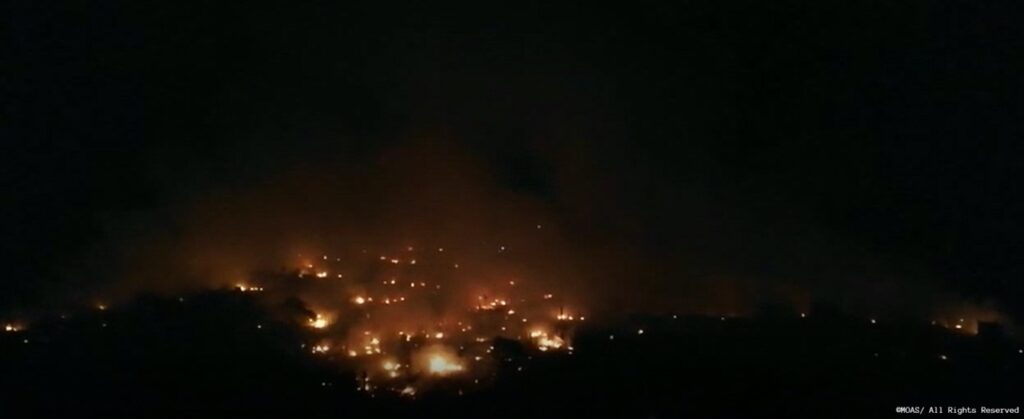Alarm rises after Rohingya refugee camp was hit by a second fire in a week..
A devastating fire broke out on Sunday in Camp 16, a Rohingya Refugee Camp in Cox’s Bazar, Bangladesh, destroying 800 households. The fire was brought under control after two hours, by which point approximately 4000 people in the camp had lost their shelters and all personal belongings. The fire also severely impacted the surrounding host community.
According to UN agency IOM, “at this stage, no fatalities have been reported, though two people are reportedly injured by the fire”. The cause and origin of the fire remain unknown.
Sadly, it was not an isolated episode. According to the report from Cox’s Bazar Site Management Sector, 5 fire incidents were reported in the camps in the last week alone, causing severe damage to shelters and core support facilities including health clinics, distribution points, and learning centres.
Fire risk represents a clear and present dang er to refugees and displaced persons worldwide. Thousands of people, including children and women, are continually exposed to such hazards.
er to refugees and displaced persons worldwide. Thousands of people, including children and women, are continually exposed to such hazards.
In March last year, a massive blaze broke out in Cox’s Bazar, leaving 15 dead, over 500 injured and at least 10,000 shelters destroyed. One fire alone displaced around 45,000 refugees. Other fires across this period have affected tens of thousands of refugees in different areas of the world.
Refugee and IDP camps often have high numbers of inhabitants living in extremely close quarters. Such camps are generally overcrowded, haphazardly erected and constructed of highly flammable materials. Considering the materials used in shelter construction, any fires breaking out in the camps can behave like wildfire: the fire spreads rapidly from structure to structure through the densely packed camp. The widespread use of liquid petroleum gas (LPG) for cooking has heightened potential fire risk, making the process of fighting fires in the refugee camps even more complex.
Since 2021, MOAS is working to mitigate fire risk in refugees’ camps globally. MOAS has launched a new project to address the life-threatening dangers posed by fires and is deploying easily transportable Mobile Firefighting Units, whilst MOAS’ technical experts train volunteers in fire response. Volunteers trained by MOAS also learn key techniques for using the equipment effectively, that reduce the risk to firefighters and enhance the fire-fighting response. The training also focuses on fire prevention and the maintenance of equipment.
Regina Catrambone, co-founder and Director of MOAS, stated: “When fires break out in a refugee camp, humanitarian actors rush to provide vital health and shelter services for those who are affected. But the damage fire inflicts on victims, including children, of life-changing injuries and the loss of what few precious mementoes they have carried with them from their homelands cannot be undone. That’s why we at MOAS are working to support fire response teams in the refugee camps and local communities to build capacity and create fast and effective fire response systems, so other families don’t have to experience the same devastating impact of fire suffered by those affected by this week’s blaze. As an INGO experienced in global Search and Rescue activities, MOAS is able to draw on its expertise to contribute to fire-fighting initiatives in displacement camp settings worldwide”.
